Photographer Spotlight: Dyutima Jha's Inspiring Journey to Food Photography
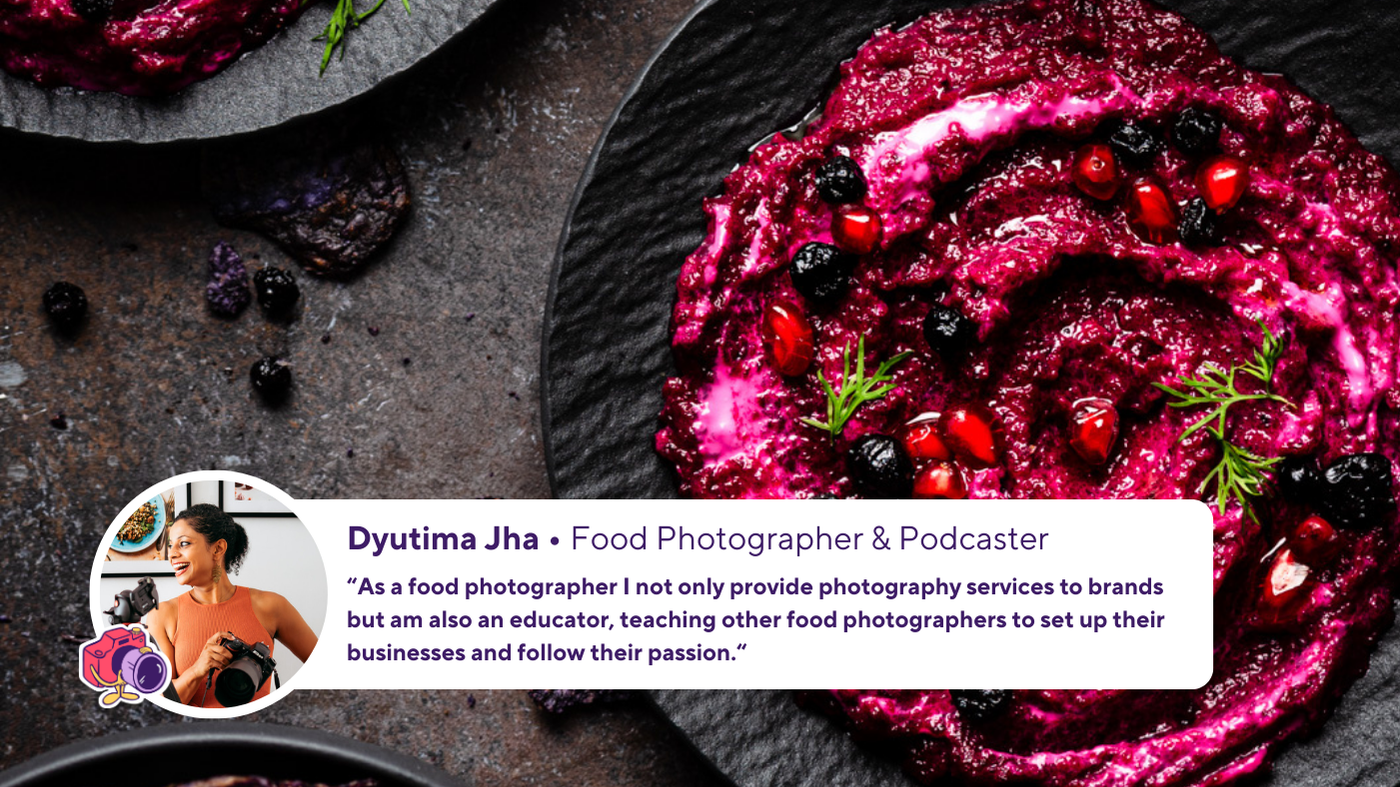
Meet Dyutima Jha, an architect-turned-commercial and editorial food photographer and podcaster based in Singapore. As the first South Asian woman to host a food photography podcast, My Food Lens, she has made a significant mark in the industry.
After dedicating 15 years as an architect designing healthcare facilities around the world, Dyutima discovered a newfound passion for food styling and photography. This career shift led to her creating a thriving business, where she collaborates with clients globally and shares her expertise with aspiring photographers.
Her impressive portfolio includes features in notable food and photography magazines such as Thrive and Whalebone and prestigious clients like The Intercontinental Hotel Singapore and McCormick. Continue reading to discover more about her inspiring photography career!
What inspired your transition from architecture to food photography?
My move from architecture to food photography was a spontaneous shift. It was a huge leap of faith. After years of being an architect and working in an intense industry, I was taking a break. I spent a lot of time trying out new recipes because I had missed cooking while working hard in my architecture job. I also began to post photos of what I had made on Instagram thinking “Let me have fun while it lasts because sooner or later I will return to architecture-burg and life will look nothing like this.”
One day out of the blue, I got a message on Instagram. A brand wanted to hire me to take photos of their food products. Something struck me and I took it as a sign from the universe. I put all the job offers on hold and decided to try out being a professional food photographer. I just wanted to give it a shot and see where it went.
When I decided to start a food photography business, I had never used a DSLR. So, I spent a few months learning technical skills and practising photography. I didn’t have any projects in hand and yet, went and officially registered the business. A few months later I had my first client and they were the largest retailer in Singapore. That day and today I’ve never looked back. I’ve moved forward with the mindset, “Let’s see where this goes.”
Has your background in architecture influenced your approach to photography?
My architectural experience has been the backbone of my photography and business skills. My background gives me a deep understanding of balance, colour, rhythm, harmony, proportions, compositions, geometry, symmetry, the golden triangle, Fibonacci series – essential knowledge for food photography. It has also given me the skill to create art direction for a project from scratch.
Design and composition are only one parts of what I’ve carried with me. I’ve also brought my learnings on how to interpret client briefs, present concepts for a commission, how to pitch, professional conduct etc. into my photography business. Aesthetics help me in photography but my experience with clients as an architect taught me a lot about client handling and has helped me grow my client base over the years.
Oftentimes when we switch careers we feel that all those years will go to waste. But when we take those learnings with us in our new careers, it sets us apart in the market because no one else does things our way.
Why food styling and photography? Can you share the story behind the founding of My Food Lens?
My passion for food styling and photography is deep-rooted in my childhood and love for food. My mom gave me her legacy for cooking and when I embraced it while taking a break from my architecture job, it led me to photography.
In fact, my story did not begin as a food photographer. When I was cooking a lot and posting photos on social media, I set out to be a food blogger. I created a food blog with recipes and photos taken with my phone at the time. When we were thinking of a name, it did not start with My Food Lens. It started as a name for the food blog and went through several iterations.
For a long time, I was writing recipes for the blog but somehow did not make the blog live. I kept waiting for the right time. And somewhere along the way, my love for photography became stronger than my love for cooking. At one point I began to notice that I just wanted to be done quickly with the cooking so I could spend the day photographing. I began nurturing it and it began to feed my soul. My passion for photography developed and so, the blog was changed. We turned it into a photography website, hid all the recipe pages and began to think of a new name.
I wanted the reference of food and photography in the name and My Food Lens, a photography business that started as a food blog, was born. The break from my architecture job took me back to my love for cooking, which led me to photography, which was initially a tool to share my recipes but became a passion rather swiftly.
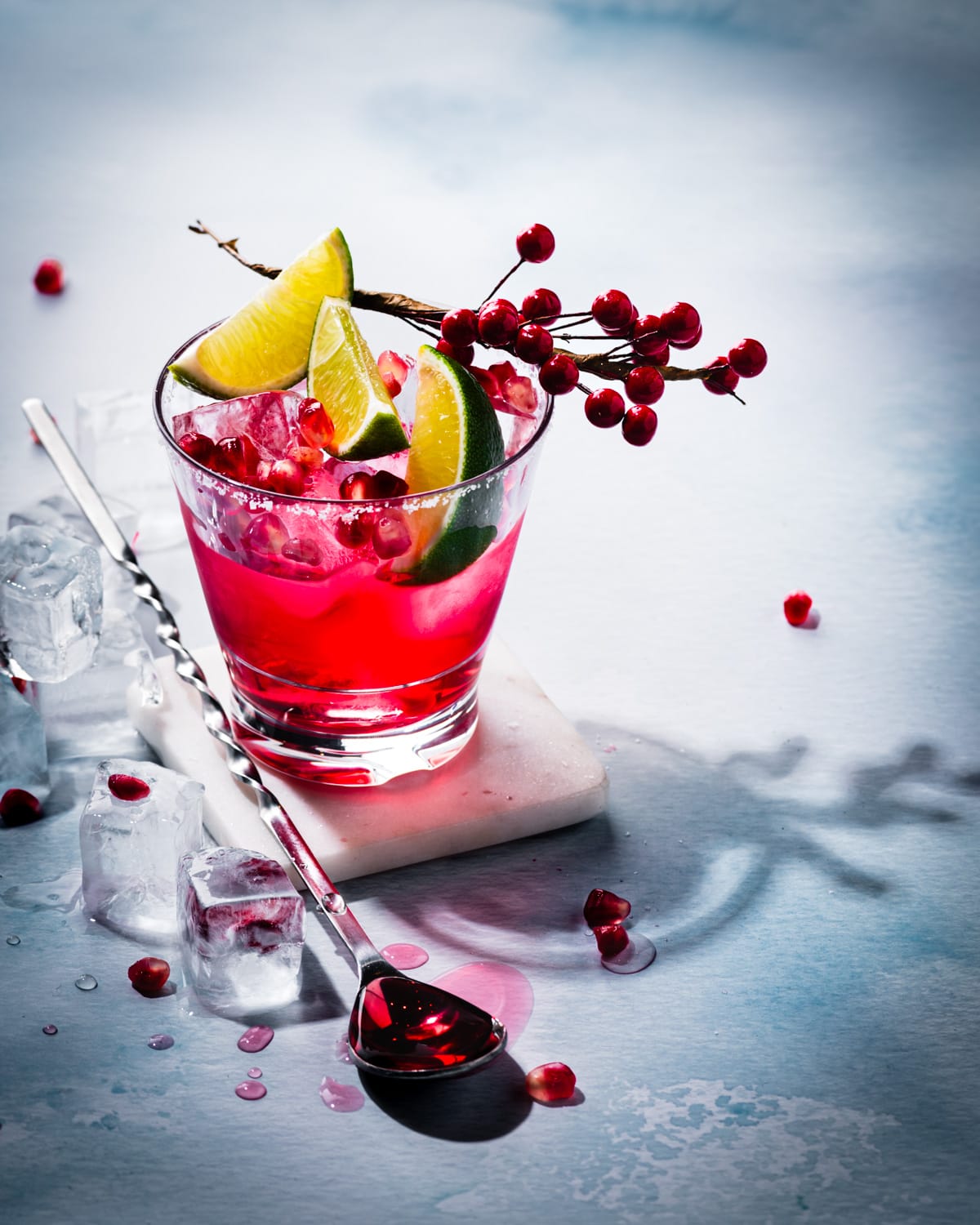
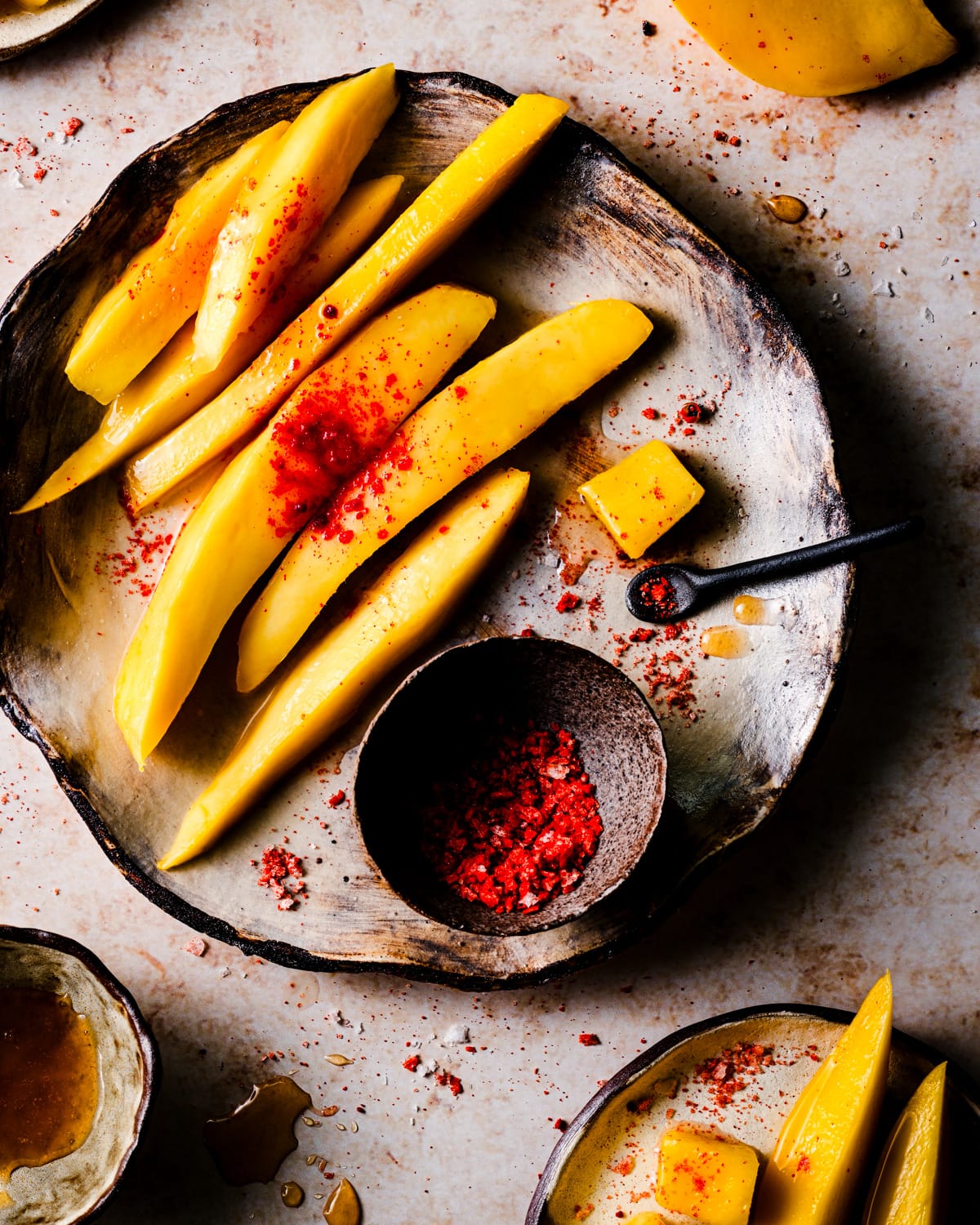
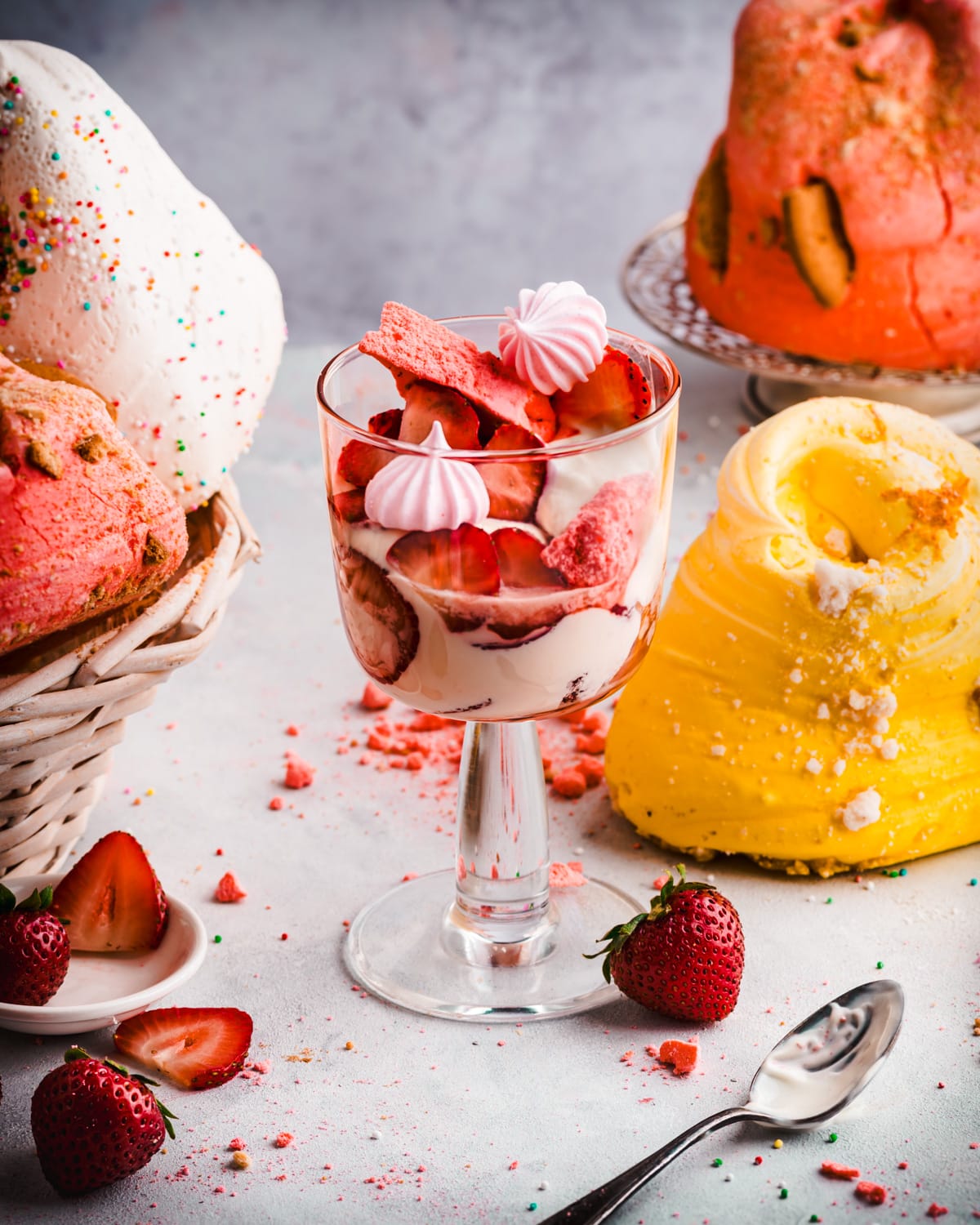
© Dyutima Jha
Were there any marketing strategies you found particularly effective to get your name out there initially?
I’m a huge believer in making things happen rather than waiting for them to happen. When I started, a lot of business came through word of mouth. Some of my best clients came through recommendations but to be able to create a consistent income, I needed more.
So I began pitching to brands and it turned out to be extremely effective. I was able to work with 5-start hotels, global magazines and the top F&B brands by pitching to them. We found that reaching out to our dream clients through powerful pitches was by far one of the most powerful ways to market our services.
What is the most rewarding aspect of your work?
As a food photographer, I not only provide photography services to brands but am also an educator, teaching other food photographers to set up their businesses and follow their passion.
A rewarding part of my work is seeing my photos fulfil the purpose they are created for. When a brand makes money and has better sales by using my photos for their marketing purposes, it is the best feeling.
But more than anything, I love seeing other photographers make their dreams come true. When I hear that they won a project by following my pitching guide, made a switch from their corporate careers to full-time photography by following my podcast or got their photos on a magazine cover by following my photography tips, it is the most rewarding part of being an educator.
I built a business from scratch and understand what it takes to make it through. Being able to simplify the process for other photographers is part of my mission. To me, there is no greater happiness than being of service and helping others succeed.
What does your go-to gear set-up look like that you find yourself using often?
I love to keep it uncomplicated. I feel that a simple setup can achieve the same results as a complex one. It all depends on our skills. Even though I own a variety of complex gear, my setup is fairly straightforward.
I use a Manfrotto tripod with an overhead arm because we photographers love overhead shots. Nikon is my brand of choice. I toggle between my Nikon D750 DSLR and mirrorless Nikon Z 7II camera depending on what and where I’m shooting. I’m also always falling back on the Micro Nikkor 105mm 1:2.8mmG ED lens because the details and the light it captures are phenomenal. I shoot with artificial light and my go-to brand is Profoto. One strobe with a rectangular diffuser is typically my setup unless it is a very large composition.
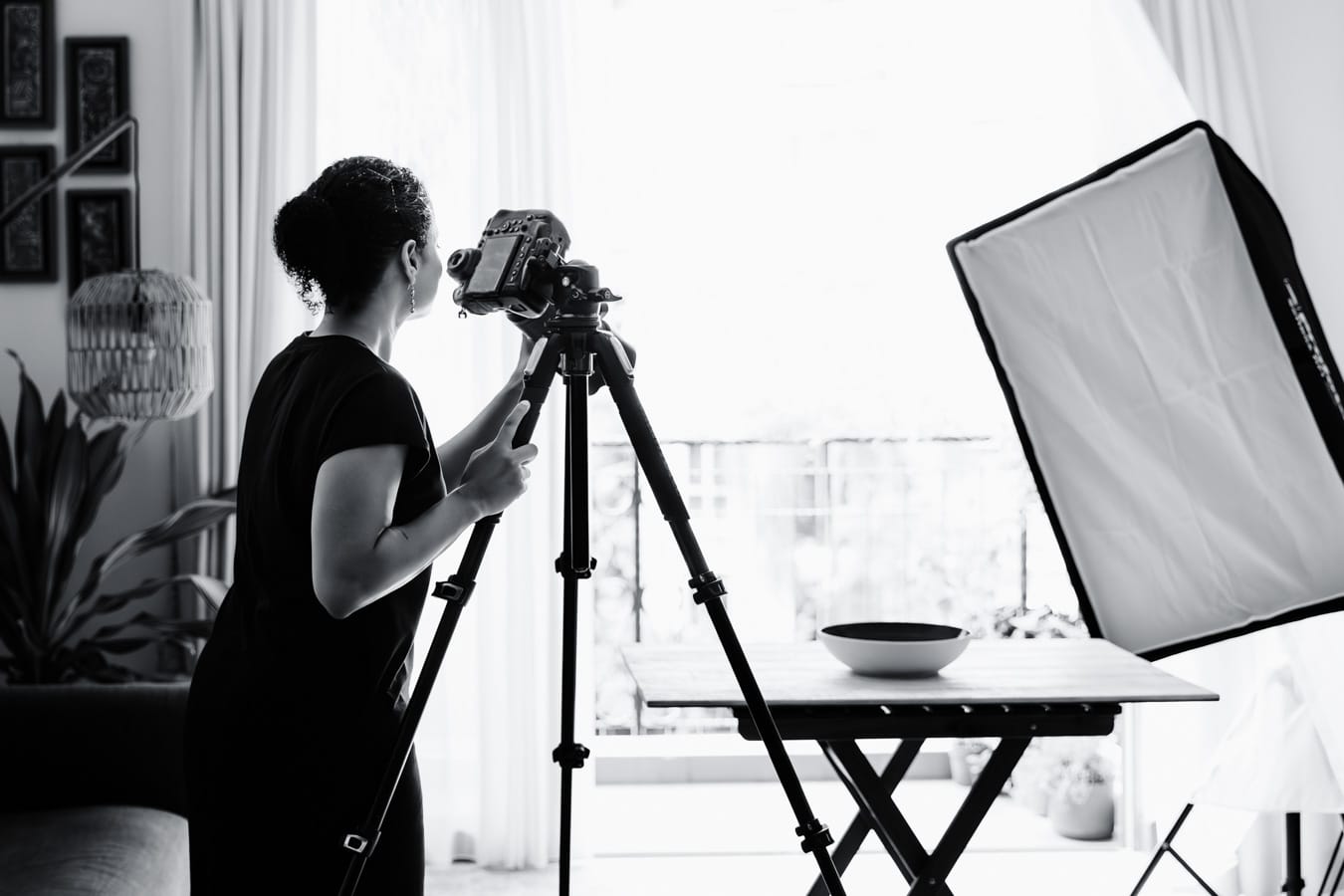
How do you keep a healthy work-life balance?
The truth is that work-life balance isn’t always possible especially when we run businesses. But there are lifestyle practices we can adopt to work in a way that allows us to be present in our personal lives while moving forward in our professional spheres without burning out.
From diet to exercise, I stay disciplined about my physical fitness. I take care of nutrition and also follow a regular workout routine from running, swimming, pilates to strength training, exercising 6 days a week. Taking care of my physical health contributes to staying healthy emotionally as well. It also allows me to bring my energy to my work and stay focused in the hours I’m at my desk. I’ve learnt that planning and organising my week ahead helps me manage time better, accomplish tasks faster & stay efficient, giving me the flexibility to spend time with my family.
Looking back, what would you do differently in your career?
When I started a business, my only thought was to give it a try and see where it took me. If I had to do it differently, I would get highly intentional right at the beginning of my career. I would set targets, and goals and work in a very laser-focused manner keeping a tab on my analytics and business numbers. I would have a clear vision for my business and know what I wanted out of it. Having clarity in business is everything. Even though my journey so far has been successful, it would have looked a lot different had I sought that clarity and vision right from the start.
What advice would you give to someone who is just beginning their career as a Photographer?
Don’t wait till you’re ready and don’t overthink.
Want to start a photography business? Jump in and you’ll learn how to swim.
Want to work with a dream client? Just reach out.
Want to learn how to work with artificial lights or studio set-up? Do it today.
Don’t wait for the right time, to make more money, more experience etc.
We are always creating objections for ourselves to not do what we really want. So if you want to be a photographer, firstly start calling yourself one and secondly - become one.
Finally, what is your favourite dish to photograph and why?
My favourite photography subject is not a cooked dish but the ingredients. My favourite subject is cherry tomatoes – their form, colour and shape are so beautiful and they catch highlights amazingly well. Even if it's just a bowl of tomatoes, they look so photogenic. I can photograph them for hours.
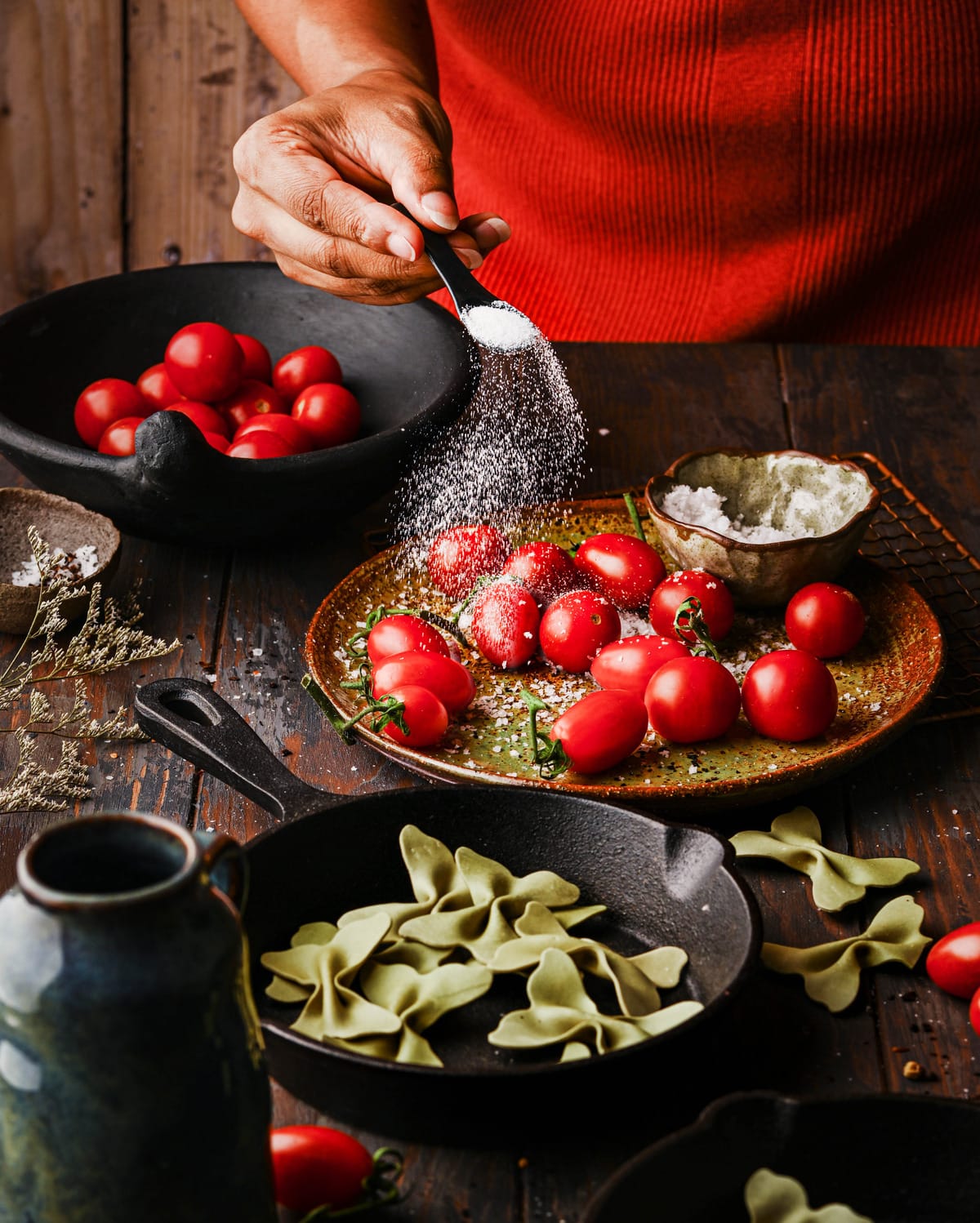
If you enjoyed this interview, make sure to check out these other great features:
- Photographer Spotlight with Krissy Johnson
- Dan Higginson on Managing a Wedding Photography Business
- Peter Craigman on Building a Six-Figure Photography Business
- Kari Bjorn on First Looks Wedding Photography Trend
If you'd like to learn more about the best practices for your photography business and discover helpful tips and tools, browse our growing collection of articles on our blog.
